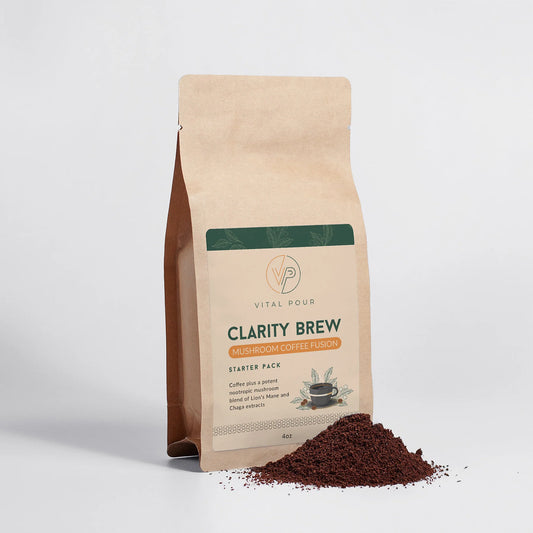As the warmth of spring awakens the forest floor, a world of culinary treasures emerges for the intrepid forager. Among these is the pheasant back mushroom, a beginner-friendly fungus that offers a unique and rewarding experience for both novice and seasoned mushroom hunters.
This comprehensive guide will walk you through everything you need to know about identifying, safely foraging, and preparing this remarkable mushroom.
We'll explore its key characteristics, debunk common myths, and provide expert tips to ensure your foraging adventures are both successful and safe.
For those interested in the broader world of beneficial fungi, be sure to explore our guide to functional mushrooms to learn more about their diverse health benefits.
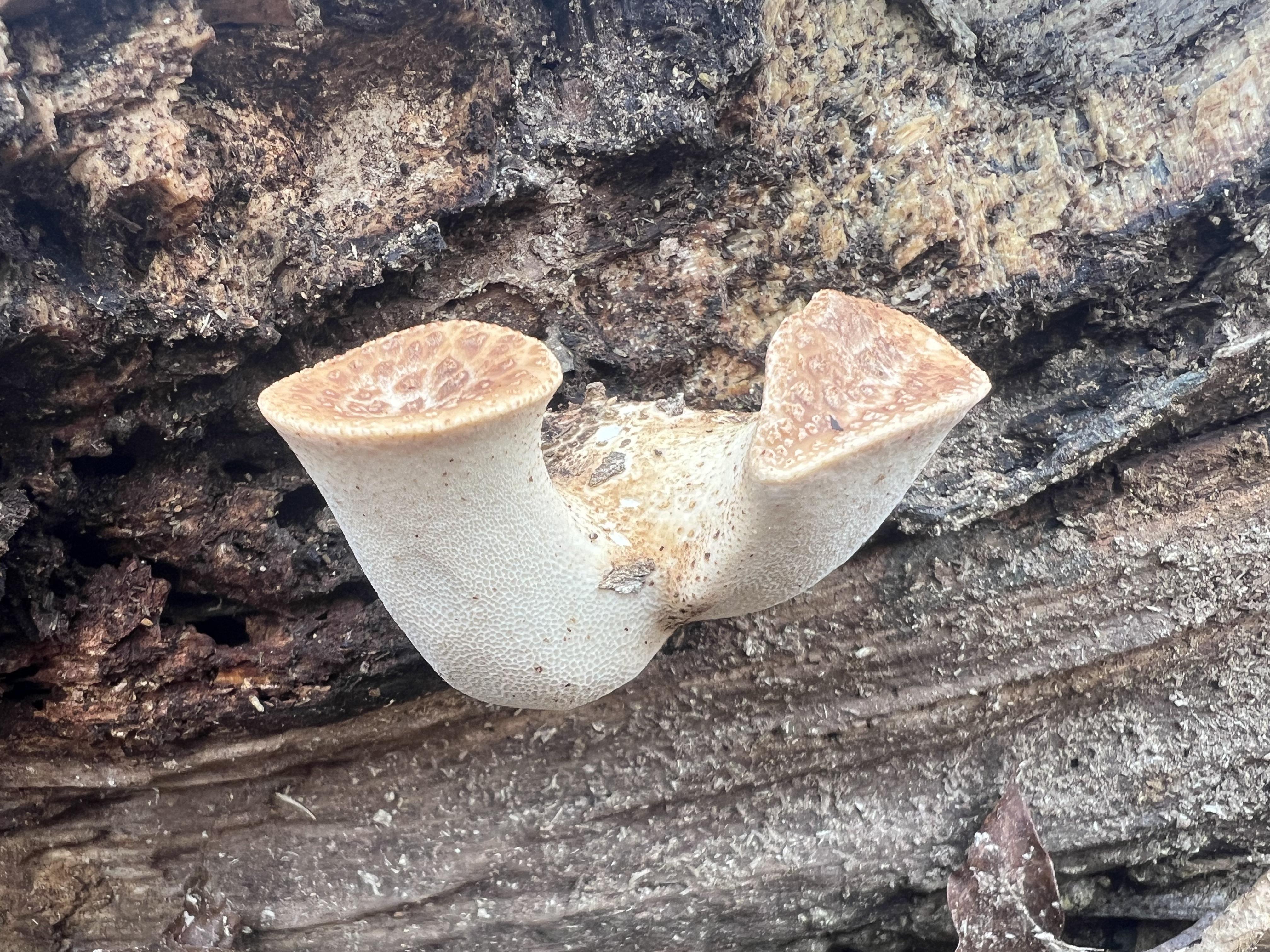 Source: Reddit
Source: Reddit
What Are Pheasant Back Mushrooms?
The pheasant back mushroom, scientifically known as Cerioporus squamosus (formerly Polyporus squamosus), is a widespread and easily recognizable edible fungus. It earns its common name from the beautiful, feather-like pattern of brown scales that adorn its cap, reminiscent of a pheasant's back.
You may also hear it referred to as Dryad's saddle or hawk's wing. This mushroom is a polypore, meaning it has a porous surface on its underside rather than the gills found on many other mushrooms. It typically grows in a shelf-like formation on dead or dying hardwood trees and is most commonly found in North America, east of the Rocky Mountains. According to the USDA Forest Service, these mushrooms play an important ecological role as decomposers in forest ecosystems.
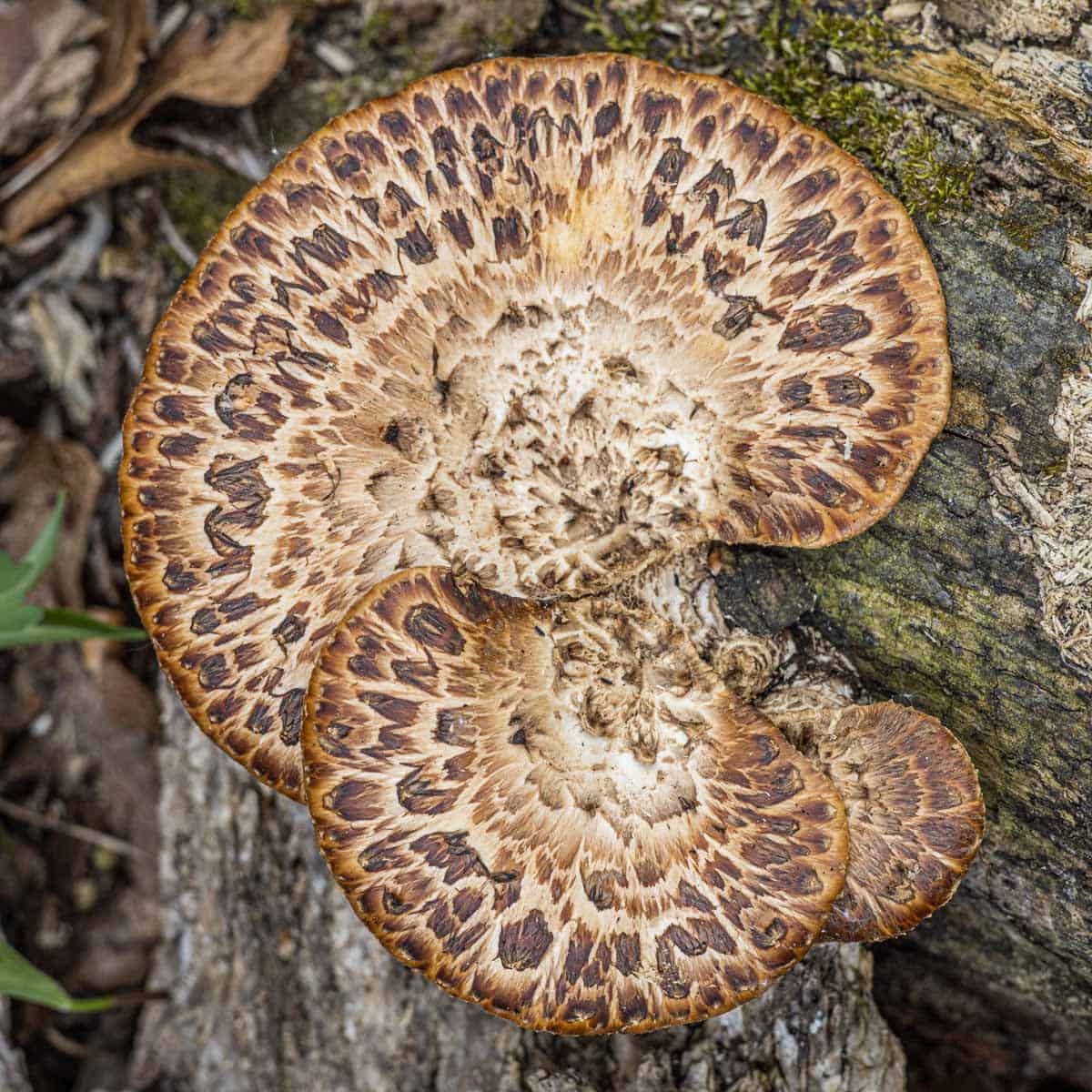 Source: Forager Chef
Source: Forager Chef
Are Pheasant Back Mushrooms Edible?
Yes, pheasant back mushrooms are not only edible but also quite delicious when harvested at the right time.
The key to a pleasant culinary experience with this mushroom is to find it when it's young and tender. As it matures, it can become tough and leathery, making it less suitable for most dishes. When young, the flesh is soft and has a surprising and pleasant aroma and flavor reminiscent of cucumber or watermelon rind.
In fact, these mushrooms are often sold to restaurants, fetching a market price of $10-20 per pound depending on their quality. If you're interested in incorporating more beneficial fungi into your diet, consider exploring the world of mushroom supplements for a convenient and effective option.
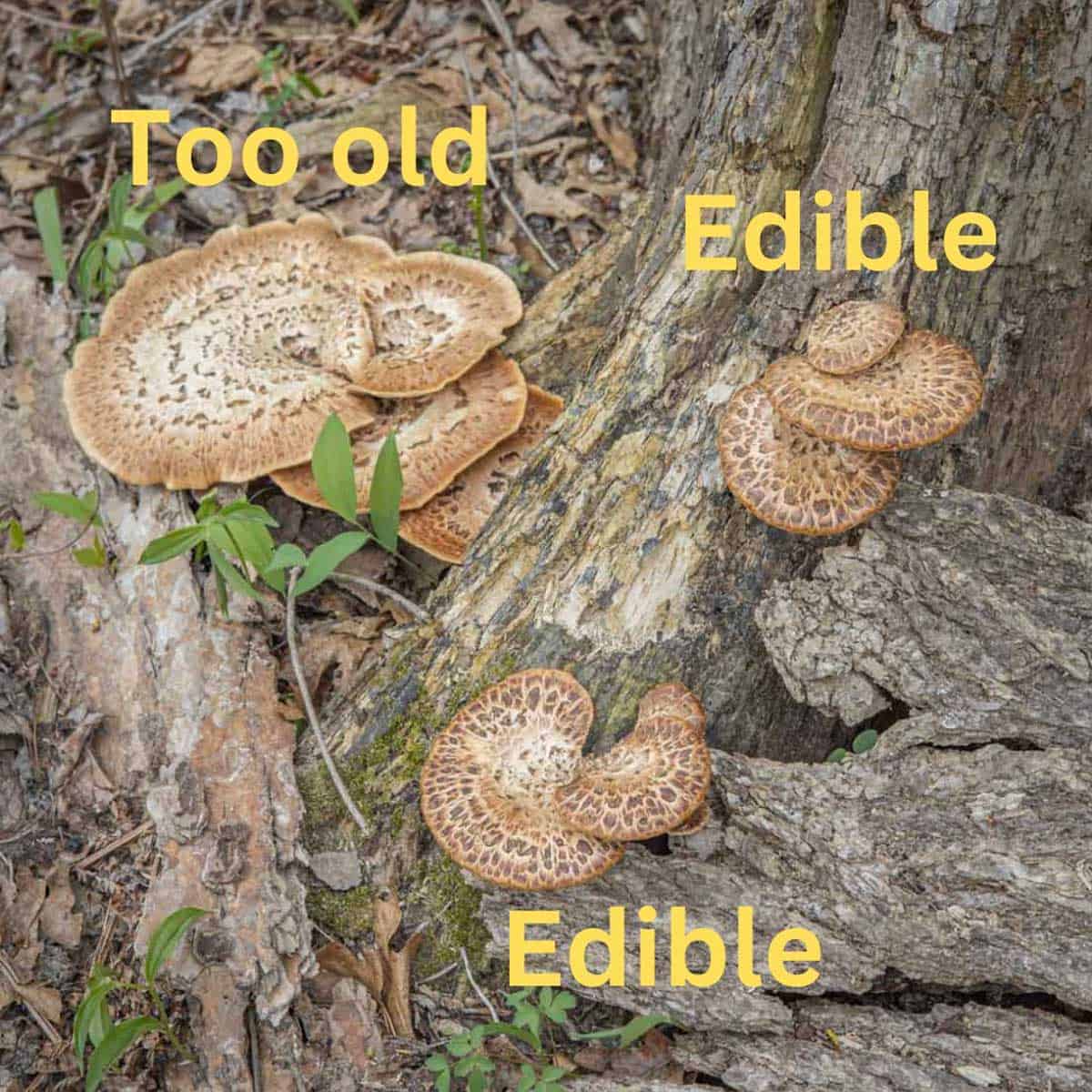 Source: Forager Chef
Source: Forager Chef
How Do You Identify Pheasant Back Mushrooms?
Proper identification is the most critical skill for any mushroom forager. Fortunately, the pheasant back mushroom has several distinct features that make it one of the easiest and safest wild mushrooms for beginners to identify.
Physical Characteristics
- Size and Shape: Pheasant back mushrooms can grow to be quite large, with some specimens reaching up to two feet in diameter. They typically grow in a fan or kidney-shaped bracket formation, often in overlapping tiers.
- Cap: The cap is the most identifiable feature, with its creamy white to light tan surface covered in concentric, dark brown scales that resemble the feathers on a pheasant's back.
- Pores: Unlike many other mushrooms, the pheasant back does not have gills. Instead, its underside is covered in small, tightly packed white pores that have a honeycomb-like appearance.
- Stem: The stem is thick, short, and often off-center. It can be white or have the same brown speckling as the cap.
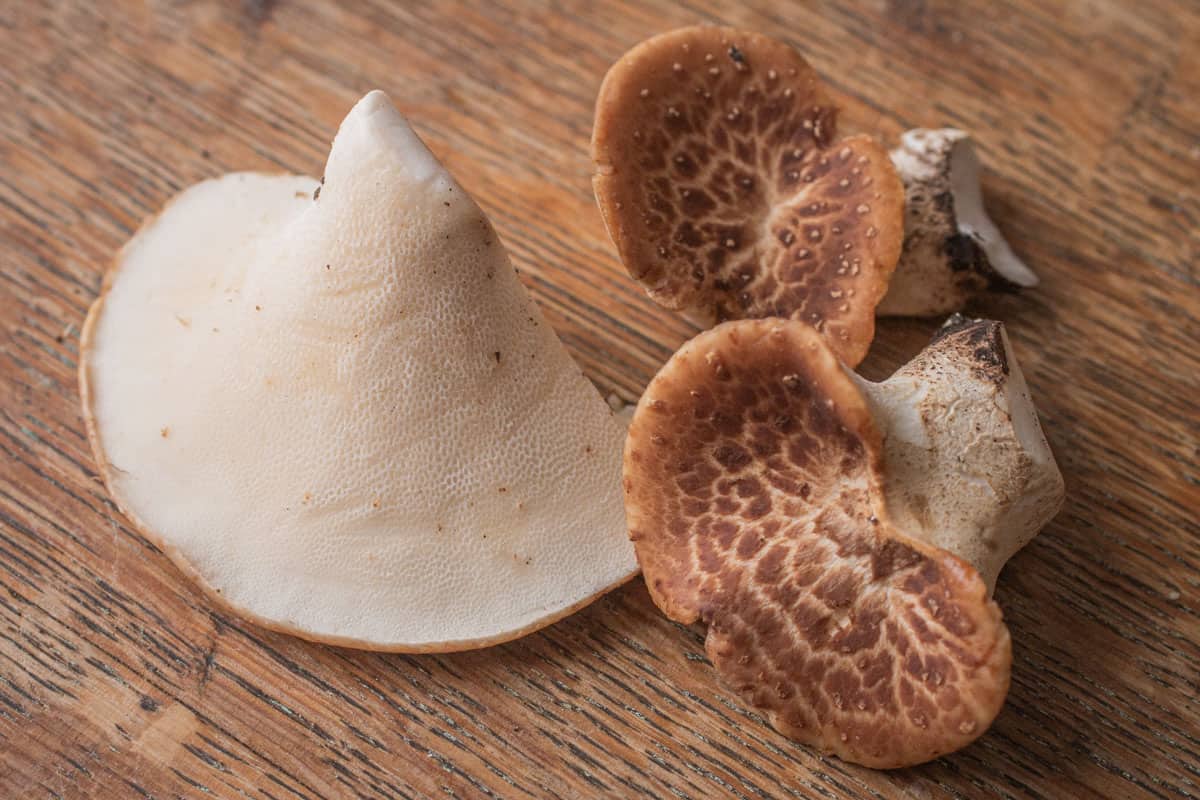 Source: Forager Chef
Source: Forager Chef
Growth Stages
The appearance of the pheasant back mushroom changes significantly as it matures. When first emerging, it looks like a thick, fleshy, white, bulbous protrusion with brown speckles on top.
As it grows, it flattens out to form the characteristic bracket shape. It's essential to harvest these mushrooms when they are young, as they grow very quickly and can become tough in a matter of days.
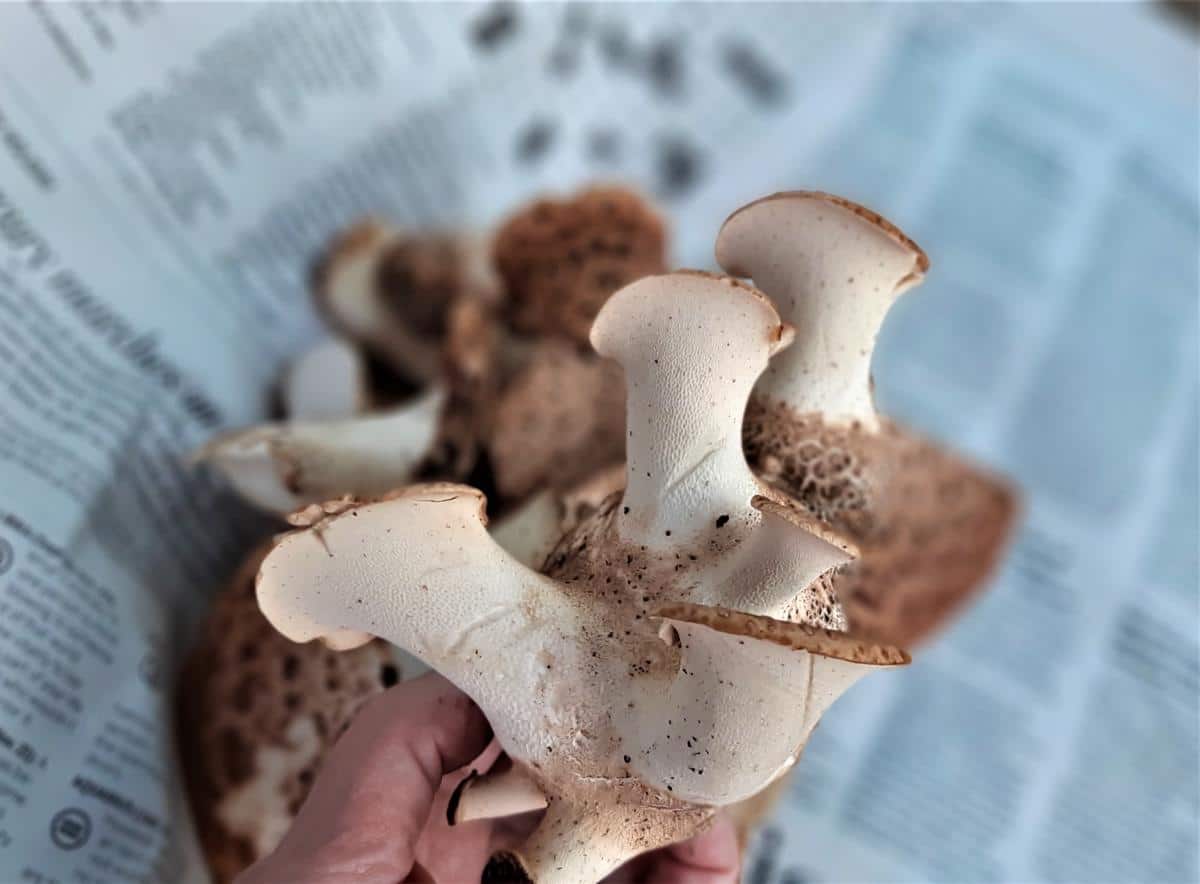 Source: Mushroom Appreciation
Source: Mushroom Appreciation
Habitat and Host Trees
Pheasant back mushrooms are parasitic saprophytes, meaning they grow on and derive nutrients from dead or dying hardwood trees, causing a white rot disease. They are commonly found on:
- Elm
- Box Elder
- Ash
- Beech
- Silver Maple
Look for them on fallen logs, stumps, or on the trunks of standing dead trees, usually close to the ground.
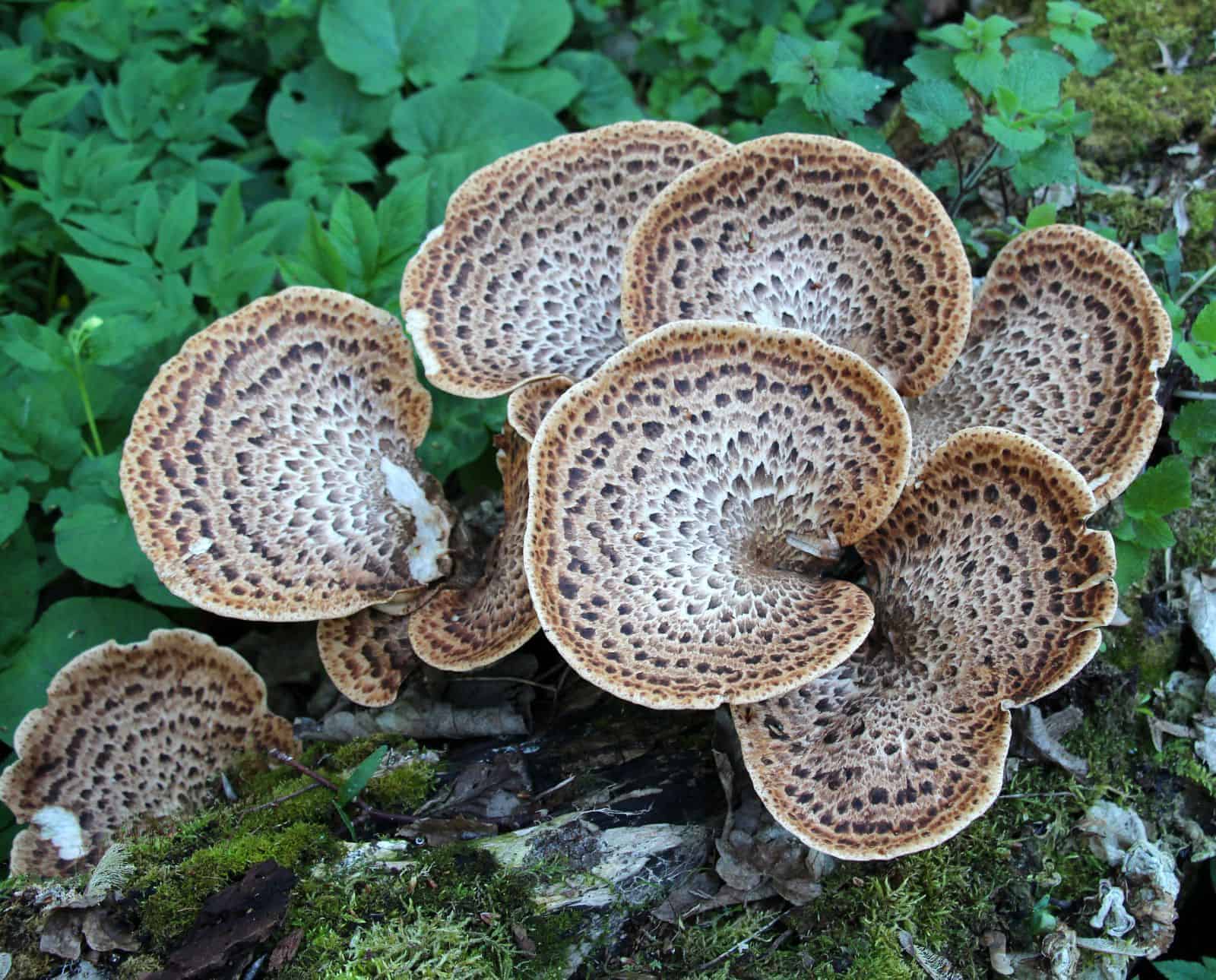 Source: Project Upland
Source: Project Upland
Are There Poisonous Pheasant Back Mushroom Look-Alikes?
This is one of the most common and important questions for any aspiring forager. The great news is that there are no known poisonous look-alikes to the pheasant back mushroom. This is another reason why it is considered such a safe and ideal mushroom for beginners.
The North American Mycological Association emphasizes the importance of proper identification and notes that pheasant back mushrooms are among the safest for novice foragers.
Similar Species (All Edible)
While there are no toxic mimics, a few other mushrooms share some visual similarities. However, these are also edible, though generally not considered as desirable as a young pheasant back.
- Train-Wrecker (Neolentinus lepideus): This mushroom also has scales on its cap but can be distinguished by the presence of gills instead of pores.
- Giant Sawgill: Similar to the Train-Wrecker, this mushroom has gills with serrated edges.
- Hawk's Wing (Sarcodon imbricatus): This mushroom has a similar scaly cap but has teeth on its underside instead of pores or gills.
Key Distinguishing Features
The most reliable way to confirm you have a pheasant back mushroom is to check for the presence of pores on the underside of the cap. If you see gills or teeth, you have a different mushroom. The distinctive cucumber or watermelon rind scent is another strong indicator.
Are Pheasant Back Mushrooms Psychedelic?
No, pheasant back mushrooms are not psychedelic. They do not contain psilocybin or any other psychoactive compounds. They are a purely culinary mushroom, valued for their unique flavor and nutritional benefits.
It's important not to confuse them with any psychoactive mushroom species. The National Institute on Drug Abuse provides comprehensive information about psychoactive substances, and pheasant back mushrooms are not among them.
Where and When to Find Pheasant Back Mushrooms
Timing and location are everything when it comes to foraging for pheasant back mushrooms. Knowing when and where to look will significantly increase your chances of a successful harvest.
Seasonal Timing
- Spring: The primary season for pheasant back mushrooms is in the spring, typically from April to May. This often coincides with morel season, so you can hunt for both at the same time.
- Fall: You may also find a second, smaller fruiting in the fall as temperatures cool down.
- After Rain: The best time to search is 1-2 days after a good, soaking rain, as this triggers their rapid growth.
Geographic Range
Pheasant back mushrooms are found across the globe, including North America, Asia, Europe, and Australia. In North America, they are most abundant east of the Rocky Mountains.
Habitat Specifics
Look for pheasant back mushrooms in hardwood forests. They grow exclusively on dead or dying hardwood trees, so focus your search on:
- Fallen logs and stumps
- Standing dead trees
- Areas with a high concentration of elm, box elder, ash, or maple trees
How to Harvest Pheasant Back Mushrooms Safely
Once you've located a pheasant back mushroom, proper harvesting techniques will ensure you get the best quality mushrooms while also protecting the fungal organism for future growth.
The Scrape Test
The most important factor in harvesting is ensuring the mushroom is tender enough to eat. Use the "scrape test" to check for tenderness:
- Gently scrape the porous underside of the cap with your fingernail or a knife.
- If the pores come off easily, the mushroom is young and tender.
- If the pores are difficult to remove, the mushroom is too mature and will be tough.
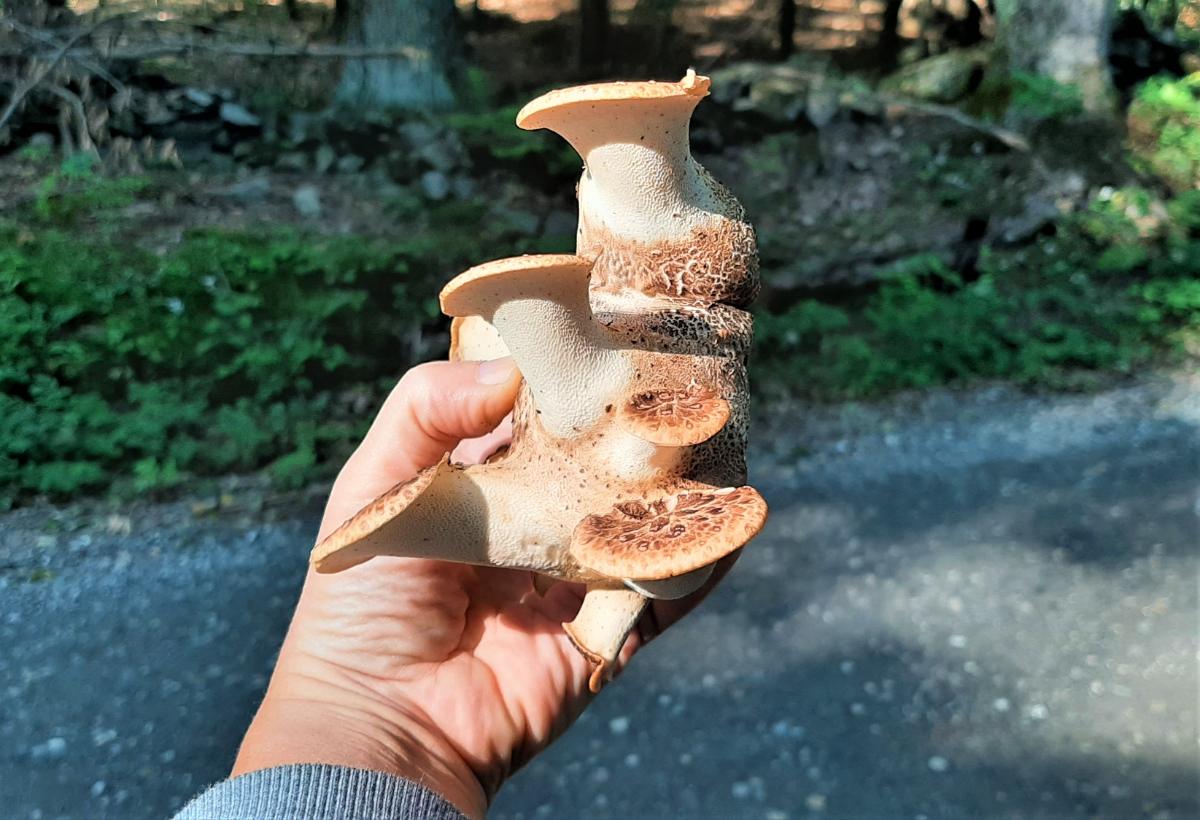 Source: Mushroom Appreciation
Source: Mushroom Appreciation
Proper Harvesting Tools
- Sharp Knife: Use a sharp knife to cut the mushroom from the tree. This provides a clean cut and avoids damaging the mycelium.
- Basket or Mesh Bag: Collect your mushrooms in a basket or mesh bag. This allows spores to be released as you walk through the woods, helping to propagate the species.
Sustainable Practices
- Leave the Mycelium: Never tear the mushroom from the tree, as this can damage the underlying mycelium, the main body of the fungus.
- Harvest Only What You Need: Leave some mushrooms behind to continue their life cycle and provide a food source for wildlife.
Preparing and Cooking Pheasant Back Mushrooms
The unique flavor and texture of young pheasant back mushrooms make them a versatile ingredient in the kitchen. Proper preparation is key to unlocking their culinary potential.
Cleaning Process
- Remove Pores: Even on young specimens, it's a good practice to scrape off the pores from the underside of the cap, as they can have a slightly rubbery texture when cooked.
- Wipe Clean: Pheasant back mushrooms are usually quite clean. Simply wipe away any dirt or debris with a damp cloth or soft brush.
Advanced Cooking Technique
For the best flavor and texture, try this two-step cooking method:
- Water Removal: Slice the mushrooms and place them in a dry pan over medium heat. The mushrooms will release their water content. Cook until all the water has evaporated.
- High-Heat Sauté: Once the pan is dry, add a high-smoke-point fat like ghee or canola oil and increase the heat. Sauté the mushrooms until they are nicely browned and crispy.
Recipe Ideas
- Simple Sauté: Sautéed with garlic, butter, and fresh herbs is a classic and delicious way to enjoy them.
- Soups and Broths: The tougher, more mature mushrooms can be used to create a flavorful and aromatic mushroom broth.
- Pickling: Thinly sliced pheasant back mushrooms make excellent pickles.
For another unique way to enjoy the flavor of mushrooms, consider trying a mushroom coffee blend for a rich and earthy start to your day.
Health Benefits and Nutritional Value
Pheasant back mushrooms are not only a tasty wild edible but also offer a range of nutritional benefits. They are a good source of:
- Protein
- Fiber
- B vitamins
- Potassium
- Antioxidants
According to research published in the Journal of Food Science, many wild mushrooms contain bioactive compounds that can support overall health and well-being. While pheasant back mushrooms are not as extensively studied as some other species, they are a nutritious addition to any diet.
Preservation and Storage
If you have a bountiful harvest, there are several ways to preserve your pheasant back mushrooms:
- Fresh Storage: Store fresh mushrooms in a paper bag in the refrigerator for up to a week.
- Drying: Thinly slice the mushrooms and use a dehydrator to dry them until they are brittle. The dried mushrooms can be powdered and used to flavor soups and stocks.
- Freezing: Sauté the mushrooms and then freeze them in an airtight container for up to six months.
Beginner Foraging Tips
- Safety First: Always be 100% certain of your identification before consuming any wild mushroom.
- Start Small: Begin by learning one or two easily identifiable mushrooms, like the pheasant back.
- Consult Experts: Join a local mycological society or online foraging group to learn from experienced foragers.
- Respect Nature: Tread lightly in the forest, and always leave your foraging spots cleaner than you found them.
For those who are interested in the benefits of mushrooms but not yet ready to forage, mushroom gummies can be a great way to start.
Frequently Asked Questions
Q: Can you eat pheasant back mushrooms raw? A: While some people do eat them raw in small amounts, it is generally recommended to cook them to improve their digestibility and flavor.
Q: How can you tell if a pheasant back mushroom is too old to eat? A: Use the scrape test. If the pores on the underside are difficult to remove, the mushroom is too mature. Also, avoid any mushrooms that are discolored, slimy, or have a foul odor.
Q: Are there any legal restrictions on foraging? A: Foraging regulations vary by location. Always check the rules for the specific park, forest, or public land where you plan to forage.
Conclusion
The pheasant back mushroom is a fantastic gateway into the world of wild edible fungi. Its distinctive appearance, lack of poisonous look-alikes, and delicious flavor make it an ideal choice for beginner foragers.
By following the identification and safety guidelines in this guide, you can confidently and responsibly enjoy the thrill of the hunt and the satisfaction of a wild-harvested meal. Happy foraging!


